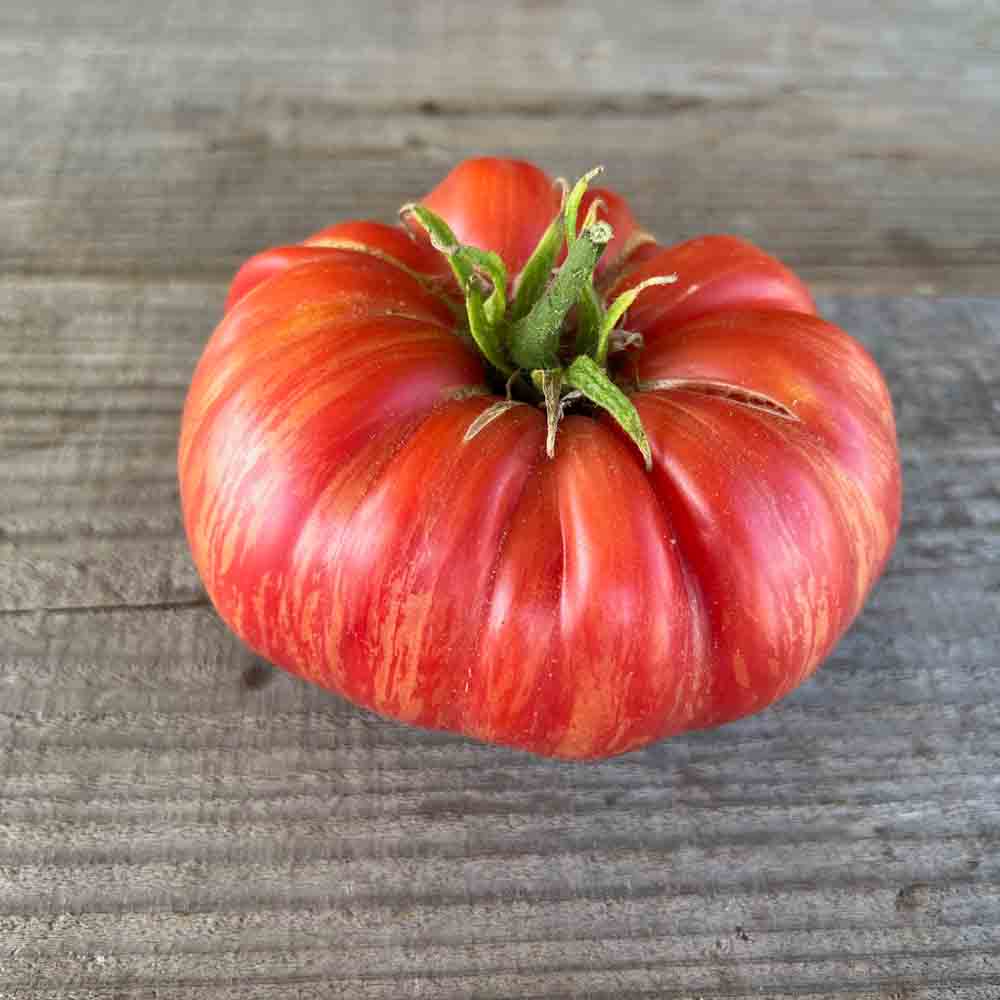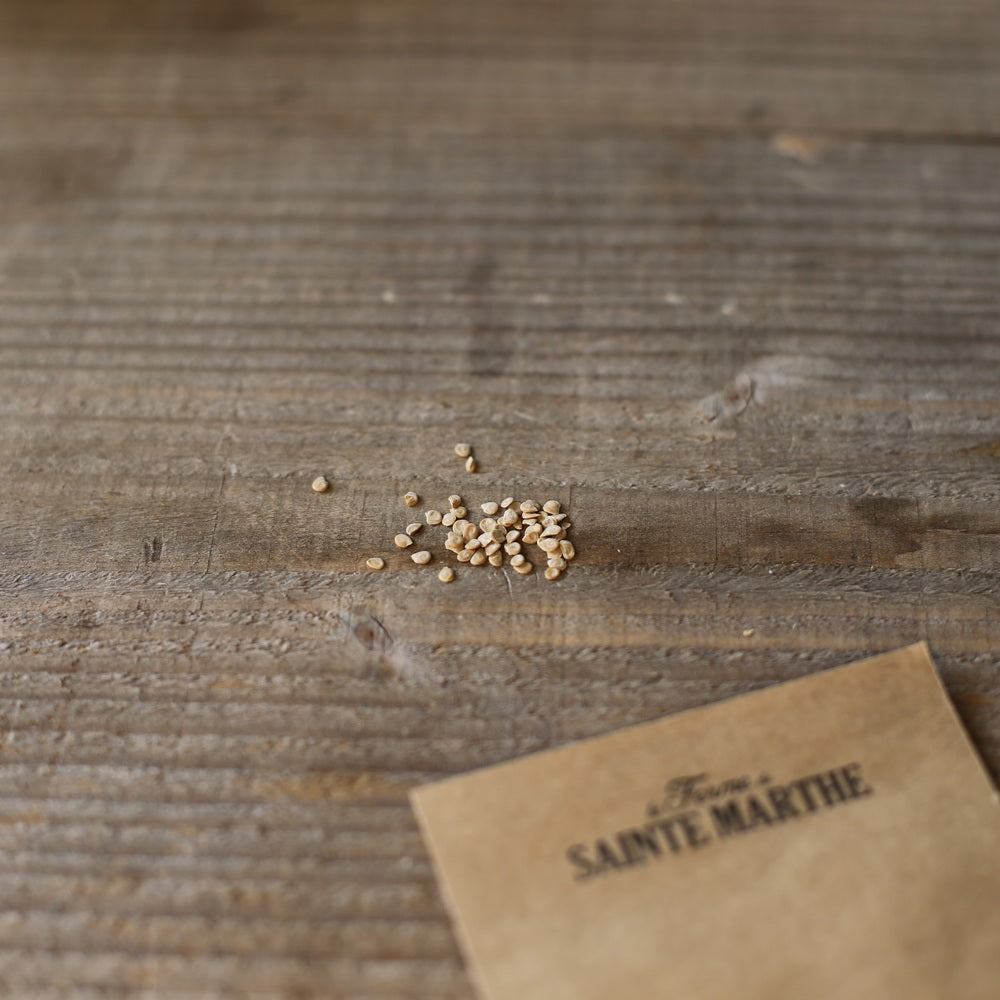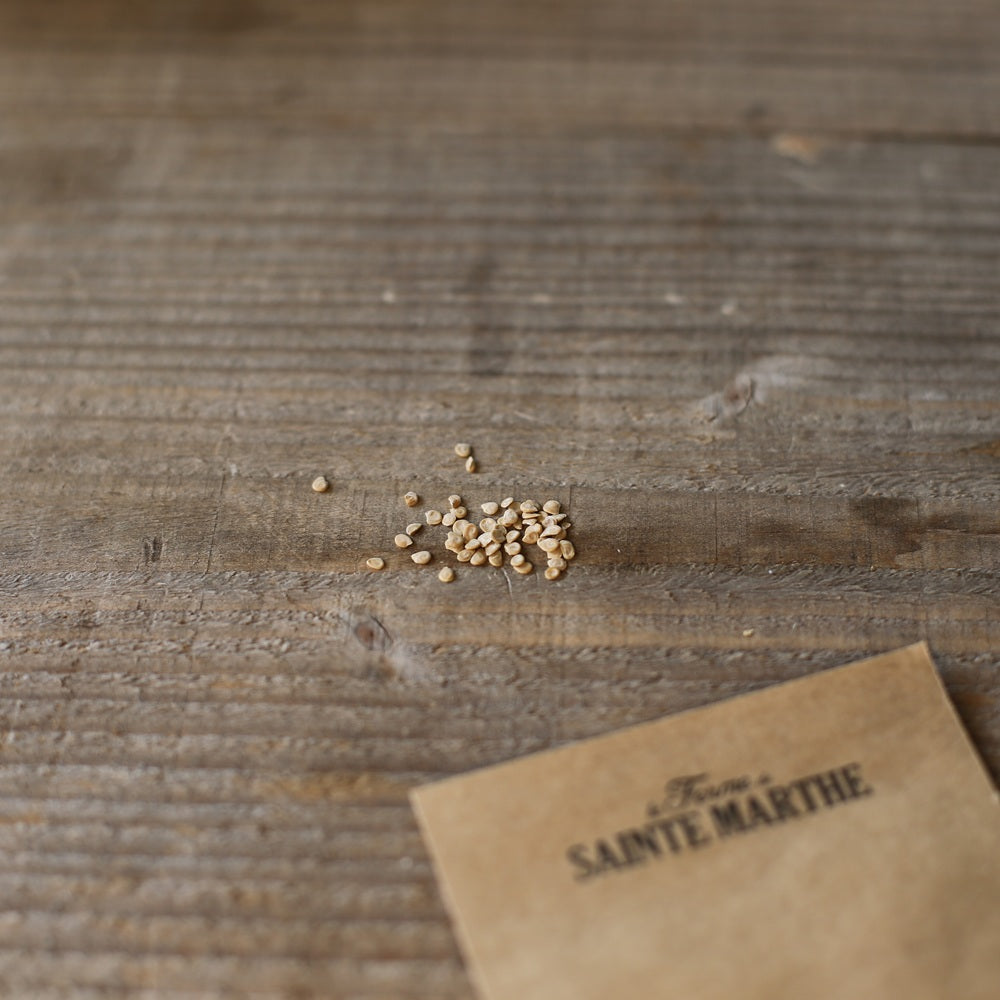TOMATO PINK JAZZ AB
Solanum lycopersicum
The Pink Jazz tomato is a seasonal variety. It produces flattened, ribbed fruits weighing 300 to 650g, pink with yellow stripes, and about 10/13 cm in diameter. A mid-season variety with indeterminate growth. The flesh is beefsteak-like, juicy, with a beautiful texture and a sweet, complex fruity flavor. Vigorous plant with great growth, very good production.
The fruits have good resistance to splitting and cracking.
A recent variety from Artisan Seeds, USA. It is susceptible to Alternaria leaf spot and Septoria leaf spot: drip irrigation is recommended, as well as regular pruning of suspect or damaged leaves.
When and how to sow Pink Jazz tomatoes?
Sowing: from February to April in a warm bed (20°) or in pots indoors or in a heated greenhouse, in fine seed compost. Tomatoes need a constant minimum temperature of 20°C to germinate.
Bury your tomato seeds 1 cm deep and then cover with seed compost. Water your compost with a sprayer to keep it moist but not soggy. Place your seed tray near a window to prevent your seedlings from shooting upwards in search of light.
Transplant when frost is no longer a risk and the plants are 12 to 15 cm tall in rich, loose, healthy soil. Space 70 cm between rows and 50 cm in the sunny row.
Place the stakes in place before starting to plant. Water thoroughly at the base once a week to prevent disease development.
Should we remove suckers from tomato plants?
Opinions differ on how to approach the infamous pruning of tomatoes, and every gardener has arguments to support their theory. To the question "what to do?" the answer is simple: whatever you want!
Pruning tomatoes by de-suckering is not mandatory; it is intended to increase the size of the fruits, their precocity and to facilitate harvesting work.
This method, however, has two drawbacks: it requires time and discernment. Indeed, the head of the tomato plant is not always easy to distinguish from a secondary branch. Furthermore, removing suckers causes wounds for your plant. It is therefore strongly recommended to consider aiding healing with a dusting of maerl or a green clay wash.
Another option is to not prune at all and allow the plant to fully develop. It will therefore need more space in the garden, i.e. 1 m between each plant. The fruits will be smaller but more numerous.
A third solution is two-pronged training. After pinching the plant 20 cm from the ground, only the two lateral shoots are kept. All the suckers are then removed.
Harvest
You can harvest tomatoes 4 to 5 months after sowing.
The enemies
The main problems that can be encountered when growing tomatoes are late blight and blossom end necrosis (black bottom).
To prevent mildew, the best solution is to protect your plants if you live in a region where it rains frequently. You can also treat your plants with Bordeaux mixture.
Blossom end necrosis, or black bottom, is not a disease. It's caused either by low calcium levels in the soil or by irregular watering. When a plant lacks water, it produces less sap, and the part furthest from the stem will die due to lack of nutrients. Therefore, water regularly, thoroughly once a week, for example.









